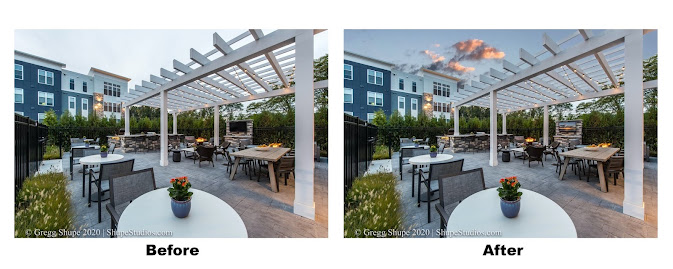HDR Editing Ethics: How Much is Too Much?
In the high-stakes world of real estate and hospitality marketing, HDR editing has become a staple—celebrated for its ability to bring out detail in both bright skies and shadowy corners. But there's a fine line between enhancement and deception. When does HDR cross into manipulation? And how do editors find that ethical middle ground?
Let’s unpack the ethics of HDR editing, especially in property retouching, hotel photo editing, and commercial real estate editing—where perception can directly affect purchase decisions.
The Power (and Risk) of HDR Editing
High Dynamic Range (HDR) techniques combine multiple exposures to balance highlights and shadows. In architecture editing, this means capturing crisp detail in windows and ceilings. In resort photo editing, it helps retain ocean blues while keeping shaded areas vibrant.
However, excessive HDR—unnatural colors, halo effects, and hyper-sharp textures—can create a surreal look that misleads viewers. This especially becomes problematic in hotel retouching or property editing where expectations set by photos may not match reality.
Where to Draw the Line
Acceptable:
Fixing poor lighting via manual blending
Recovering real-world textures
Removing color casts from walls or furniture
Subtle use of flambient editing to blend flash and ambient light
Ethically Grey:
Adding dramatic skies to rooms that face walls
Over-polishing to hide room imperfections
Intensifying lighting far beyond what exists on-site
Too Much:
Unrealistic glow in interiors
Replacing furniture without disclosure (without using virtual staging tag)
Misrepresenting layout, view, or lighting direction
Commercial Architecture Editing: Truth in Detail
For commercial architecture editing, accuracy matters—especially when marketing leased spaces or office properties. HDR helps show key features like floor plans and finishes, but must avoid exaggeration. Too much HDR risks turning the space into a digital fantasy, leading to mistrust.
This is why high end commercial editing often leans on single exposure editing with manual blending, giving more control over realism and subtlety.
Virtual Staging vs. Reality: Transparency is Key
Virtual staging is often paired with HDR to show potential—especially in resort retouching or commercial real estate editing. But it must be disclosed. Labeling an image as “virtually staged” maintains viewer trust, especially in cases where architecture retouching has digitally replaced floors, furniture, or fixtures.
Client Pressure and the Ethics Dilemma
Real estate agents and hotel marketers often ask editors to “make it pop.” But as professionals, we must push back when edits stray from enhancement to manipulation. As high end real estate retouching becomes the norm, setting boundaries is part of ethical editing.
Balancing Impact and Integrity
So, how do you ensure your HDR edits stay honest?
Use flambient editing for naturally balanced light.
Choose manual blending over aggressive auto-HDR filters.
Maintain texture integrity—don’t over-sharpen.
When in doubt, use single exposure editing to keep it real.
Final Thoughts
Editing is storytelling—but truthful storytelling. Whether it’s a hotel photo, a resort villa, or a commercial building, ethical HDR editing means showcasing a property’s beauty without overselling it. The real challenge isn’t in pushing the sliders—it's in knowing when to stop.
Need HDR that sells without stretching the truth?
Choose editors who blend creativity with credibility—because authenticity always photographs well.


Comments
Post a Comment